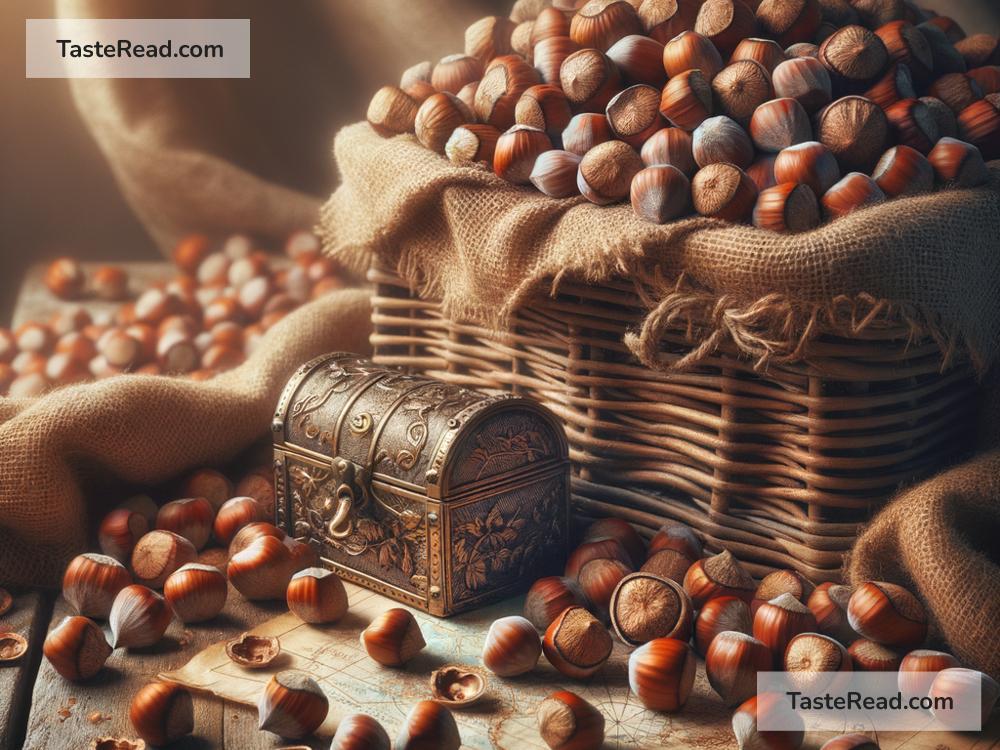How Hazelnuts Became Symbols of Hidden Treasures
You might know hazelnuts as a tasty snack or the ingredient that makes your chocolate spread irresistible. But did you know these humble nuts have long been associated with secrets and hidden treasures? Across literature, folklore, and history, hazelnuts have earned their place not just as food, but as fascinating symbols. Let’s dive into the delightful story of how hazelnuts came to represent the mysteries tucked away in the world.
What Are Hazelnuts?
Hazelnuts come from the hazel tree, which grows in many parts of the world. These nuts are encased in a hard shell, making them seem like tiny treasures hidden inside nature’s own packaging. Their small size, round shape, and protective shell might already give you a clue as to why people started associating hazelnuts with hidden things.
For centuries, hazelnuts have been used in cooking, snacks, and even medicine. But beyond their practical uses, they’ve popped up in myths, legends, and symbolic stories that connect them to ideas much bigger than their size.
Hazelnuts in Folklore and Legends
In countless stories from around the world, hazelnuts appear as magical objects. They’re not just nuts; they’re keys to mystery and wisdom. Let’s look at a few examples:
1. Celtic Mythology: The Nuts of Wisdom
In Celtic folklore, hazel trees were considered sacred and magical. People believed these trees were guarded by spirits and held special knowledge. The most famous tale involves the Salmon of Knowledge, a legendary fish that gained its wisdom by eating the hazelnuts that fell into a sacred pool beneath nine hazel trees. Anyone who ate this salmon, legends said, would gain immense wisdom.
Hazelnuts in this story symbolize hidden treasures—the kind that isn’t gold or jewels but priceless knowledge. Just as the nut is hidden inside its shell, wisdom is often something we must seek and work to uncover.
2. European Fairytales: Hazelnuts as Magical Objects
In many old European fairytales, hazelnuts appear as enchanted items. Sometimes they contain jewels, gold, or even magical creatures. For example, in certain tales, cracking open a hazelnut might release an enchanted princess trapped inside or reveal a spell that helps a hero defeat their enemies.
These stories reinforce the idea that hazelnuts are much more than food—they’re miniature treasure chests waiting to be opened.
3. Germanic Legends: Protection and Wealth
In Germanic traditions, hazel trees were believed to protect people from evil spirits. Carrying a hazelnut was thought to bring luck, shield travelers from harm, or even lead them to hidden riches. People also used hazel branches as divining rods to find water or buried treasure, further tying hazelnuts to the idea of discovering things hidden beneath the surface.
The Symbolism of Hazelnuts
Why hazelnuts? What makes them so special? The answer lies partly in their physical characteristics and partly in human imagination.
1. Small but Valuable
Hazelnuts are small but packed with nutrients. In difficult times, something as simple as finding hazelnuts could mean survival. Over time, their value grew in people’s minds—not as something flashy, but as something essential. This made them perfect symbols for hidden wealth, whether it meant food, wisdom, or material treasures.
2. Hidden Inside a Shell
The hard shell of the hazelnut is like a locked box holding something precious inside. This naturally reminds us of the idea that valuable things are often hidden, protected, or difficult to access. You have to crack open the nut to get to the treasure. Similarly, in life, we often have to work hard or overcome obstacles to find something truly worthwhile.
3. Nature’s Mystery
Hazel trees themselves often grow in quiet places, such as forests or hidden corners of nature. This adds to their mystical aura. People believed magical things happened around these trees because they’re connected to the earth’s secrets.
Hazelnuts in Modern Times
Even today, hazelnuts carry a trace of their old symbolism. They’re often associated with luxury and hidden richness, especially in foods like pralines, chocolate spreads, and gourmet dishes. The act of cracking open a hazelnut can still feel a little magical, reminding us of the stories where heroes and adventurers uncovered treasures inside.
Hazelnut trees are also celebrated for their eco-friendly qualities. They provide shade, improve soil health, and offer nourishment to wildlife. In a way, they still hide treasures—not just within their shells, but in the benefits they bring to the environment.
What Hazelnuts Teach Us
The story of hazelnuts as symbols of hidden treasures isn’t just about folklore—it’s a lesson for real life. Hazelnuts remind us that sometimes the greatest treasures are small, simple, and hidden in plain sight. Wisdom, knowledge, and even happiness are often tucked away, waiting for us to search, uncover, and appreciate.
Next time you eat a hazelnut—or spot a hazel tree in nature—take a moment to think about its hidden story. Beneath its shell lies not just a snack but a piece of history, culture, and mystery. You might find it inspires you to uncover the hidden treasures in your own life.
Who knew such a tiny nut could hold such big ideas?

